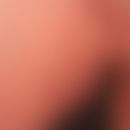Synonym(s)
DefinitionThis section has been translated automatically.
PathogenThis section has been translated automatically.
- Fusarium culmorum
- Fusarium oxysporum
- Fusarium poae
- Fusarium sambucinum
- Fusarium solani
- Fusarium verticillioides.
You might also be interested in
ClinicThis section has been translated automatically.
In immunocompetent people, skin infections are rarely observed. In most cases it is colonization of ulcers or burns. The nails are rarely affected(onychomycosis).
Fusariosis in immunocompetent persons: Deeply localized or disseminated granulomatous skin infections are usually only found in immunocompromised persons. Infections through non-sterile catheters have also been observed in cases of lack of hygiene in hospitals.
Fusarium solani causes so-called mycotoxicoses, i.e. symptoms of poisoning by mycotoxins (e.g. naphthoquinone, fusaric acid, diacetoxyscirpenol), especially in horses and cattle through the ingestion of mouldy feedstuffs such as hay, silage and cereals, like other species of chimpanzee fungus.
Note(s)This section has been translated automatically.
LiteratureThis section has been translated automatically.
- Nakamaur Y et al (2007) Deep cutaneous infection by fusarium solani in a healthy child: successful treatment with local heat therapy. J Am Dermatol 56: 873-877
Disclaimer
Please ask your physician for a reliable diagnosis. This website is only meant as a reference.




